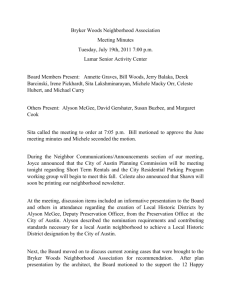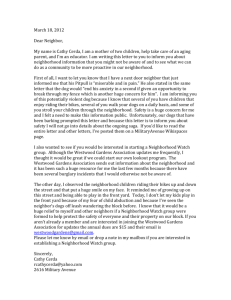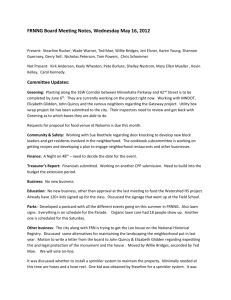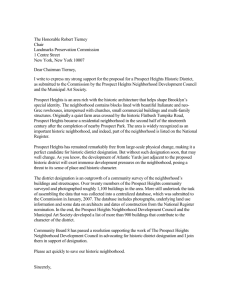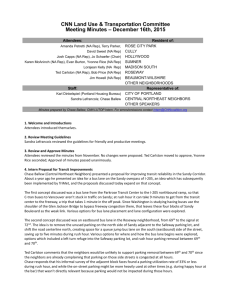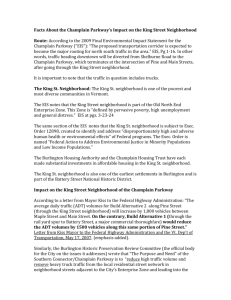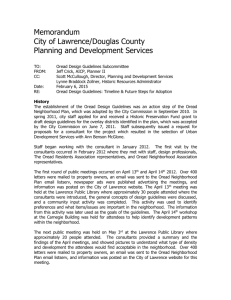Plan for Portland neighborhood includes historic district protection
advertisement
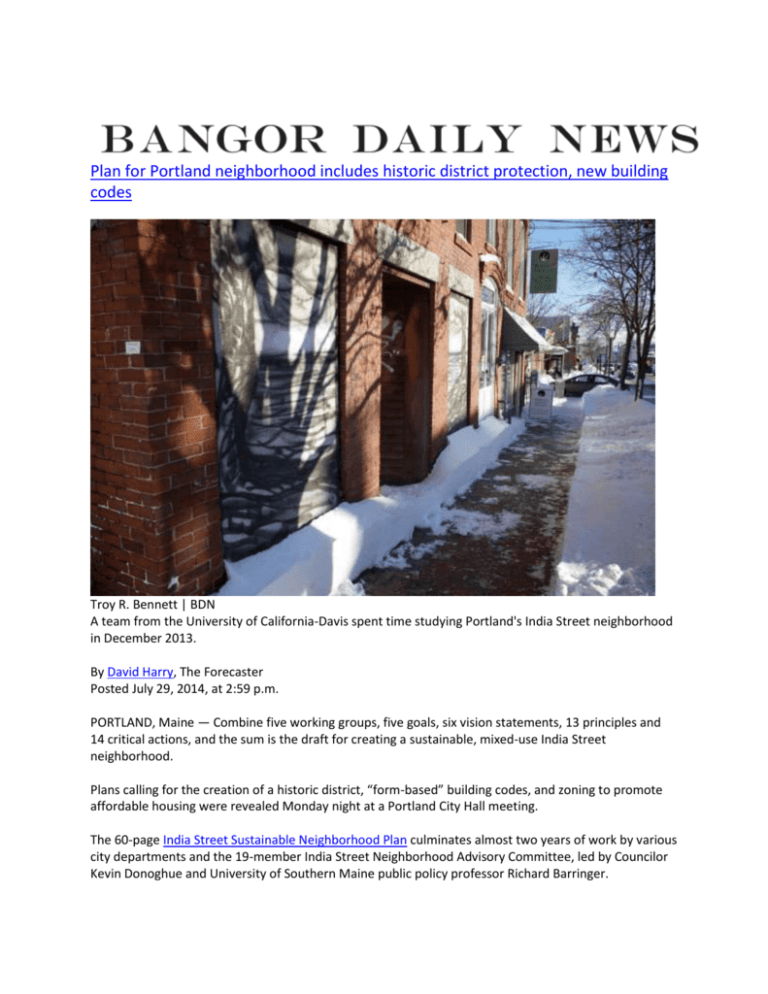
Plan for Portland neighborhood includes historic district protection, new building codes Troy R. Bennett | BDN A team from the University of California-Davis spent time studying Portland's India Street neighborhood in December 2013. By David Harry, The Forecaster Posted July 29, 2014, at 2:59 p.m. PORTLAND, Maine — Combine five working groups, five goals, six vision statements, 13 principles and 14 critical actions, and the sum is the draft for creating a sustainable, mixed-use India Street neighborhood. Plans calling for the creation of a historic district, “form-based” building codes, and zoning to promote affordable housing were revealed Monday night at a Portland City Hall meeting. The 60-page India Street Sustainable Neighborhood Plan culminates almost two years of work by various city departments and the 19-member India Street Neighborhood Advisory Committee, led by Councilor Kevin Donoghue and University of Southern Maine public policy professor Richard Barringer. The committee will meet again at 5:30 p.m. Thursday, Aug. 7, in City Hall Room 24, to make its final recommendations on the report, which will then begin a circuitous path through the City Council, Planning Board and Historic Preservation Committee before anything is enacted. What Planning Division Director Alex Jaegerman introduced as a “center of opportunity” concerns the oldest street in the city, one that lost much of its early history in the fire of 1866. The neighborhood re-emerged as a multi-cultural, multi-use center of businesses and homes, but was eventually bisected by the Franklin Arterial. In the last decade, the neighborhood the report considers bounded by Franklin, Congress, Mountfort and Commercial streets has undergone more change, with hotels and housing construction filling in large areas, including the former site of the Village Cafe. The draft report comes after extensive study, including outside consulting from the Greater Portland Council of Government’s Sustain Southern Maine project; the Urban Sustainability Accelerator funded by Portland State University in Portland, Oregon; and a week-long visit from land use specialists at the University of California-Davis. It contains recommendations to help preserve nine sites considered landmarks by ensuring the city Historic Preservation Committee reviews plans to alter or tear down the buildings. It also suggests committee or city staff review of any potential work on 70 buildings Historic Preservation Manager Deb Andrews described as “contributing” to the city’s history. “This is not to prevent change, but to thoughtfully manage it,” Andrews said. Landmark sites include the former North School and Abyssinian Meeting House. Maintaining a diverse population that can afford housing could lead to “guided growth,” which will “come from increased density of development rather than increased height,” the report said. Jaegerman said this could mean “ inclusionary zoning” that requires set-asides for affordable housing, or fees that could start at $100,000 per unit in developments with at least 10 units. The report also urges the city to convert its parking lot at Franklin and Middle streets to an affordable housing complex. City Urban Designer Caitlin Cameron said form-based building codes “are concerned with relationship of buildings to the street and the scale of development, rather than the use.” About 75 people attended the meeting, including committee members and Councilor Cheryl Leeman, and response to the report was mixed. Neighborhood resident Linda Guerra suggested the city put a moratorium on all development until the plan is implemented. She also suggested height limits be placed on development close to the water. Tony Donovan, a founding member of the Maine Rail Transit Coalition, said he hopes the area will remain available for rail service, and said the neighborhood boundary should be in the middle of Fore Street, excluding its southern side. Donovan also said including land such as the former steel foundry that is now home to Shipyard Brewing Co. should be reconsidered because it likely will not have future residential use. David Filipos, who has lived in the neighborhood for about a decade, wondered if the plan is too little, too late because of completed development projects. “This should have been done six or seven years ago,” he said.


